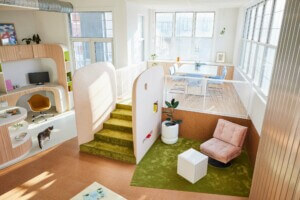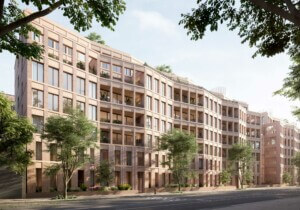The simmering opposition to the New Domino plan from the local community and especially its City Council rep has been well-noted, but the reaction from the design community has been more muted. And while the approval from the City Planning Commission, and the forthcoming showdown at with Councilman Steve Levin mean the project is pretty much headed for an up-or-down, maybe slightly tweaked if not entirely scrapped vote, design writer Stephen Zacks had made a bolder proposal, calling for the plan to be scrapped not because it is too dense and under invested, but because it is not visionary enough. “These unique sites are opportunities to generate new forms of urbanism and orders of magnitude greater revenue, instead producing the high volumes of similar units that are now languishing on the market,” Zacks declares in a letter to the Council (in full, after the jump). He has a few ideas of his own, something called Domino University, but is also soliciting them from others. Feel free to leave them in the comments section, or on his Facebook page.
Dear Honorable Members of the New York City Council:
As a part of the New York City community of architects, designers, and urbanists, we recognize that condo developments in upzoned areas have brought enormous benefits to the public through new tax revenues, high-quality architecture, affordable housing, waterfront parks, and remediation of brownfield sites. But as the market has seemed to have been over-saturated by condos and the rental vacancy rate remains unaffected by the inclusionary rezoning process, we are inviting you to consider a new model of development for the Domino Sugar site, one of the great icons of manufacturing in the area of North Brooklyn and, indeed, the United States. As you may know, Domino was the first sugar company to use branding to sell its products, and it remains one of the most recognizable brands in the country. We believe that the current plan to preserve the landmarked buildings and provide open space, affordable housing, waterfront access, and generous community space is a good start, but we think there can be a more ambitious and visionary approach to this site‹and to waterfront development in general‹which embraces the history of Domino and uses the site to prove that there is another way.
As a city, we have progressed far beyond the point we had to beg developers to invest in New York. We are in the unique position of having investors compete for the right to put billions of dollars into complicated sites that require hundreds of millions in infrastructure, even during the worst recession in decades. The Domino site presents an absolutely unparalleled opportunity, and we ask whether its redevelopment according to the same model befits its enormous significance. While we have made great progress, this model still has not lived up to the standards for design and urbanism that the city must aspire to for the next century. The Domino Sugar site is Williamsburg¹s High Line. It is clear that the market is still supporting
well-designed, high-quality architecture and urbanism. These unique sites are opportunities to generate new forms of urbanism and orders of magnitude greater revenue, instead producing the high volumes of similar units that are now languishing on the market. We believe that Rafael Viñoly is a superb architect capable of great work, but this inclusionary condo model does not permit the creativity and dynamism that could be supported by this architect, this community, this site, or this city. We ask you to send this plan back for revision, to incorporate the care and attention to detail in site planning and land use that it deserves.As a body empowered with the ability to accept or reject this plan but not, perhaps, to propose a new model of development, we ask you to take a risk. We all remember the terrible plight of New York during the fiscal crisis of the 1970s, and we never want to go back to a time when burning buildings was more profitable than designing new ones. Rejecting a 1.5 billion dollar investment in our city, especially one that is loaded with community benefits, is a risky step. But it¹s also a vote of confidence in New York City: that we can do better, that we can begin to create a city and an architecture, and a model of urban development that is fitting for a world-class city, a city that embraces its immigrant communities, a city
that is in constant transformation as every generation takes hold of it and reshapes it for itself. We ask you to consider the Domino site an example for what can be accomplished in every neighborhood and every district in the city with more attention to detail, more care, more originality, and a greater level of inclusion, not represented by percentages of units, but by a vision that connects to the history of the place and the future of the city. The Domino University plan is the beginning of a process that can begin to impact the core problem that we still face after decades of redevelopment: a rental vacancy rate that remains below three percent. We need new housing in New York City, but not of this kind. It’s time to explore a new way, and the Domino site is the place where it can begin to happen.Respectfully,
Stephen Zacks










